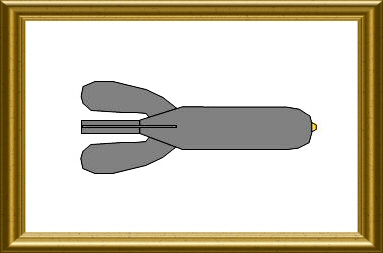|
|
|
|
|
|
|
 France
|
Obusier pneumatique de 60 mm Dormoy-Chateau Mle 1916 |
 Trench artillery
|
|
|
Contributor :
|
Location :
Belgium
Brussels
Musée Royal de l'Armée
Coordinates :
Lat : 50.84210 / Long : 4.39280
|
General comments on this surviving gun :
Identical items in the same location :
1
Items covered by this file :
1
|
|

|
|
|
The seal valve is open. Notice the manometer on the tube
|
|
|
|
|
Historic and technical information
|
|
Denomination :
60 T Dormoy-Chateau
|
Origin :
 (
Industrie privée)
(
Industrie privée)
|
|
Historic context :
A new kind of trench weapon appeared in 1915, with the pneumatic mortar. This innovation, closer to a grenade launcher because of the small weight of its projectiles, had as its greatest asset the fact he was particularly stealth thanks to its relative silence and the absence of smoke and light when firing. If History memorized mainly the famous Brandt pneumatic mortars, 3 other models appeared at their sides in 1915 : the :
- 50 mm Dormoy-Château Mle 1915
- 86 mm Boileau-Debladis Mle 1915
- 86 mm Hachette Mle 1915
After the very rustic and not so succesful 'obusier de 40 mm Dormoy-Chateau Mle 1915', a simple steel tube that launched at 200 m small 425 g cylindric projectiles equipped with a long stick as a fin, and a wind vane or a percussion fuze, came a 'obusier pneumatique de 60 mm Dormoy-Chateau Mle 1916'.
This second version kept the same basic design of a pressurizable tube inclined at a fix angle of 45 degrees and closed at its upper end by a seal valve, but this time the base was attached to a cylindrical compressed air tank pressurized by a manual puimp. Mounted on a metallic carriage, the increase of its caliber to 60 mm allowed to shoot more powerful and better stabilized fin tailed projectiles of the Brandt pneumatic mortar.
The projectile was introduced by the muzzle and the seal valvle was closed. The air pressure was increased with the pump until the level corresponding to the needed range, and the seal valved was suddenly opened with a lever, releasing the projectile ejection. The Dormoy Chateau Mle 1916 pneumatic mortar was light, easily transportable and reasonably powerful, but had some major issues such as the fact its horizontal and vertical aiming could not be changed once set up. It was not cited anymore in the French infantry manuals of 1918, having probably been removed from the active service in 1917.
|
Technical data :
- Complete description : 60 mm Dormoy-Chateau (DM) pneumatic trench mortar
- Design year : 1916
- Calibre : 60.00 mm
- Weight in firing position : 15 kg
- Weight for transportation :
- Tube length in calibres : 10.00
- Grooves : 0 (smooth bore)
- Projectile weight : 650 g (Brandt type B 1916)
- Initial speed :
- Fire rate : 10 shots / minute
- Range : 295 m
- Elevation range : None (constant 45 degrees angle)
- Direction range : none
|
Sources
|
-
Les Crapouillots 1914-1918 Pierre Waline Charles Lavauzelle 1965
-
Les canons de la Victoire 1914-1918 - Tome III - L' Artillerie de Côte et l'Artillerie de Tranchée Général Guy François Histoire et Collection 2010
-
Les engins de tranchée de faible puissance 1ère partie, les engins à tir courbe - Guerre, Blindés et Matériel Nr 121 Général Guy François Histoire et Collection 2017
|
|